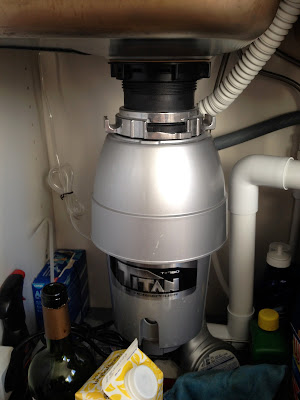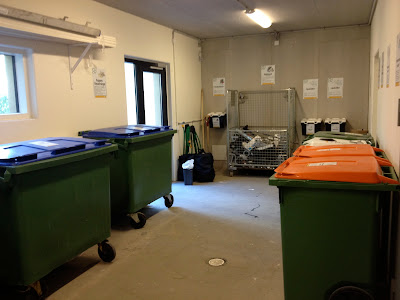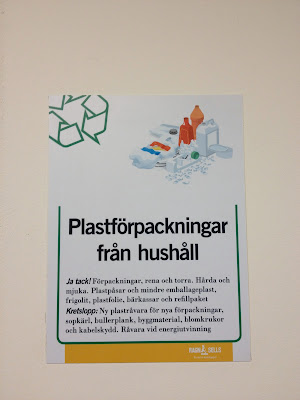it's 6.30pm and you just arrived home from work. it's time to make dinner. it is a simple meal. pasta with veggies and sauce. you pull out the cutting board and your favorite knife. you scrub all of the terrible pesticides and toxins off your vegetables, hoping that this shiny red pepper is not the one that puts one nano gram too much of whatever you don't want in your body. you chop and cut and chop and suddenly you are sauteing it all in a pan. the water is boiling for the pasta and voila! you have dinner. it's delicious, by the way.
cleanup in this kitchen is almost as easy as making the mess. you finished the pasta sauce so you splash some water around in the jar and dump it down the drain. you open the door under the sink and deposit the jar into the clear glass recycling bin. the scraps of vegetables go into the food grinder (what we used to call the garbage disposal). you splash a little water on the plates and silverware and put it all in the dishwasher. you always win the clean plate award so there are no scraps on the plate, but if there were any scraps or anything else that could be ground in the food grinder, you'd dump them into the sink and wash them "away" as well.
 |
| kitchen sink in the apartment. pretty "normal" looking. the silver button on the upper left turns on the food grinder. |
 |
| it's a titan. food grinder. |
- "clean" (meaning that the stuff that goes into the food grinder is food, not plastic or other undesirable items that dilute or destroy the biogas process)
- hygienic for the inhabitant (what you put into the grinder is what you have already touched)
- natural (no cleaning products, chemicals, or other stuff needs to be added)
- simple (press a button and it's done)
- cleaner burning (biogas is much lower emission and cleaner burning than many other fuels, especially oil based fuels such as gasoline and diesel)
want more info?
a company called vasyd is a main stakeholder in this process. their (vasyd) website is also very informative (and has english translations). I met with Mimmi Bissmont from the vasyd Malmo office. she was extremely helpful and supportive. thanks Mimmi! her work focuses on connecting action, behavior, and sustainable efforts. for more info on improved use of energy through behavior, check out this post on the psychology of energy reduction or this post about energy reduction through feedback loops.












